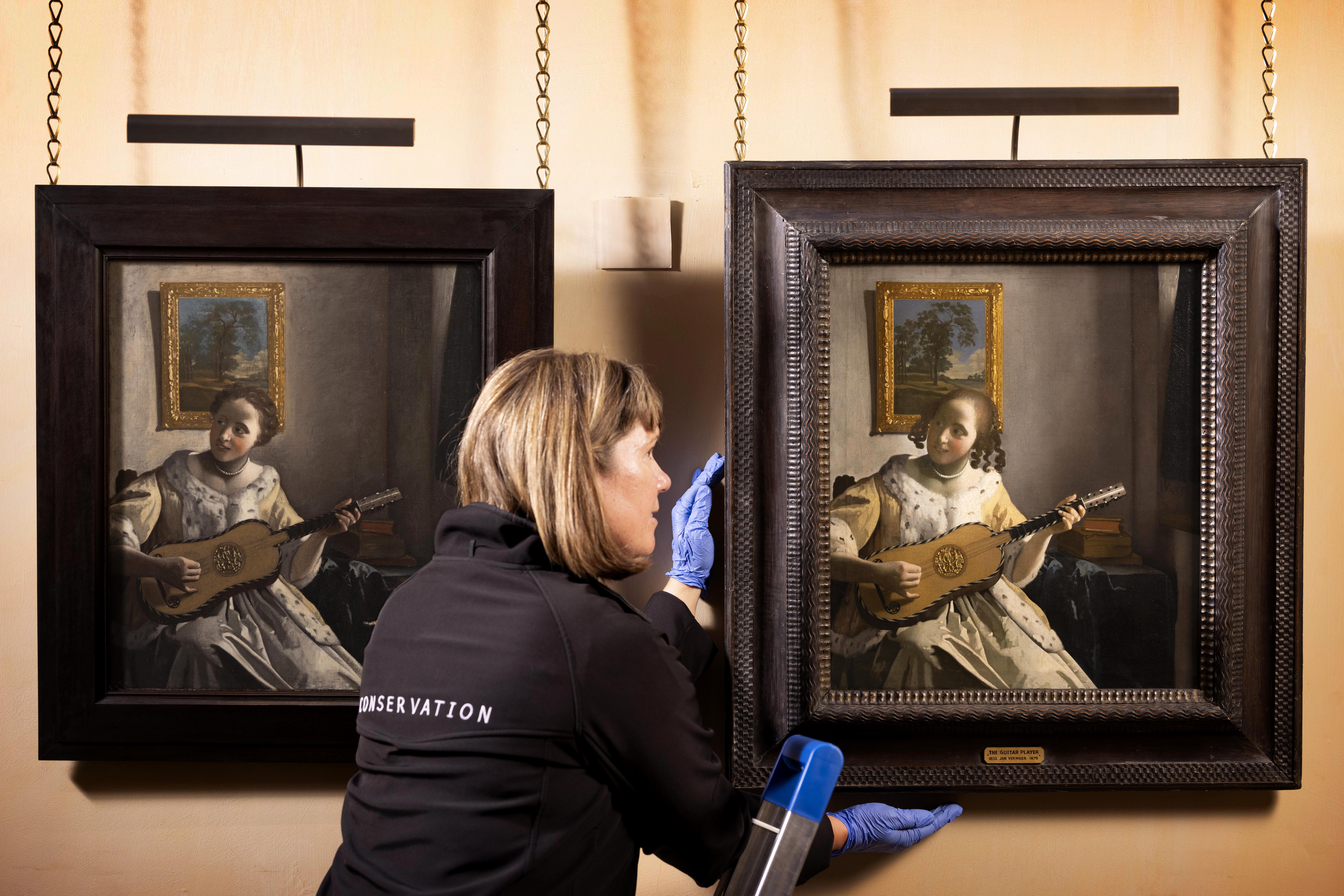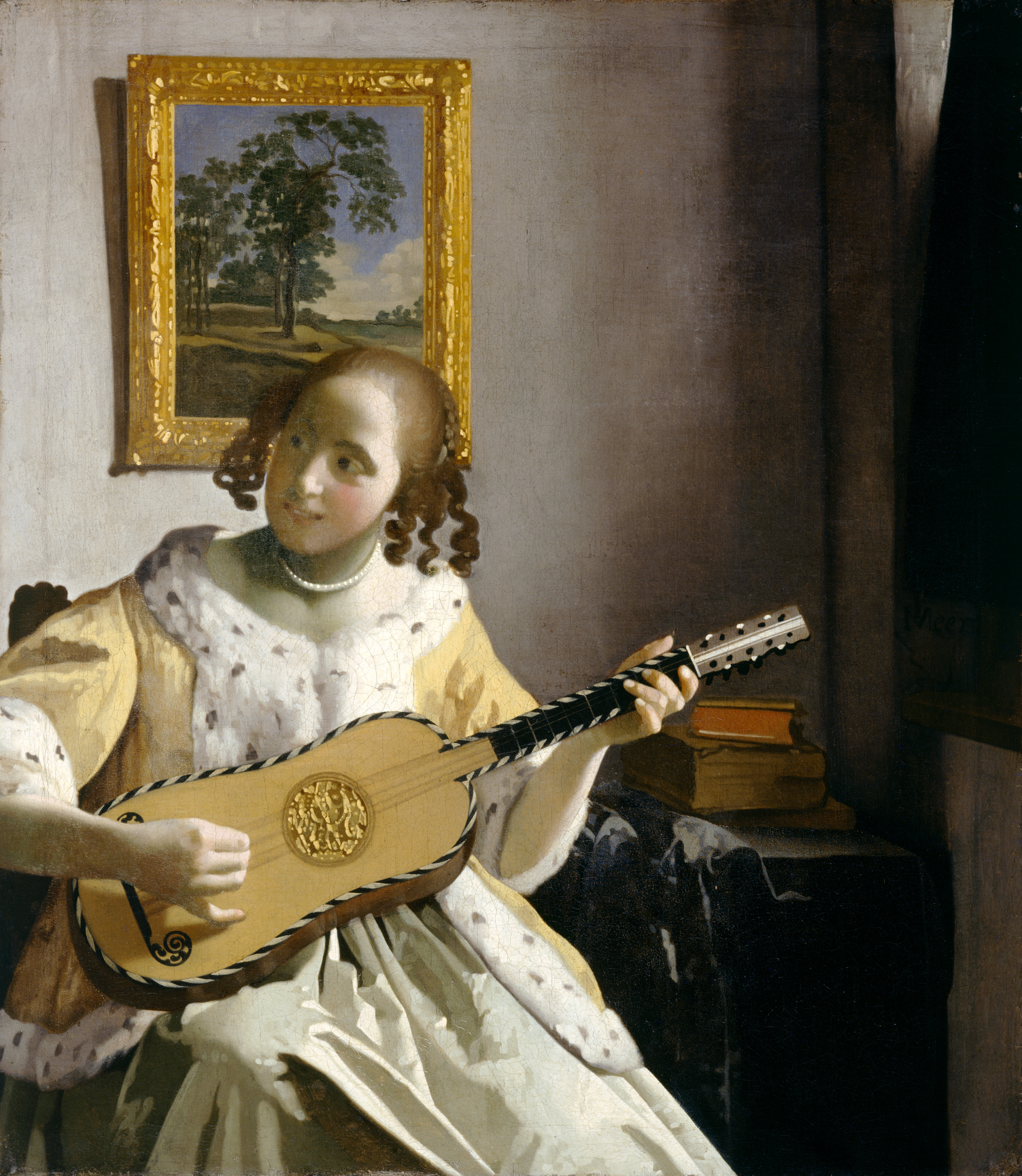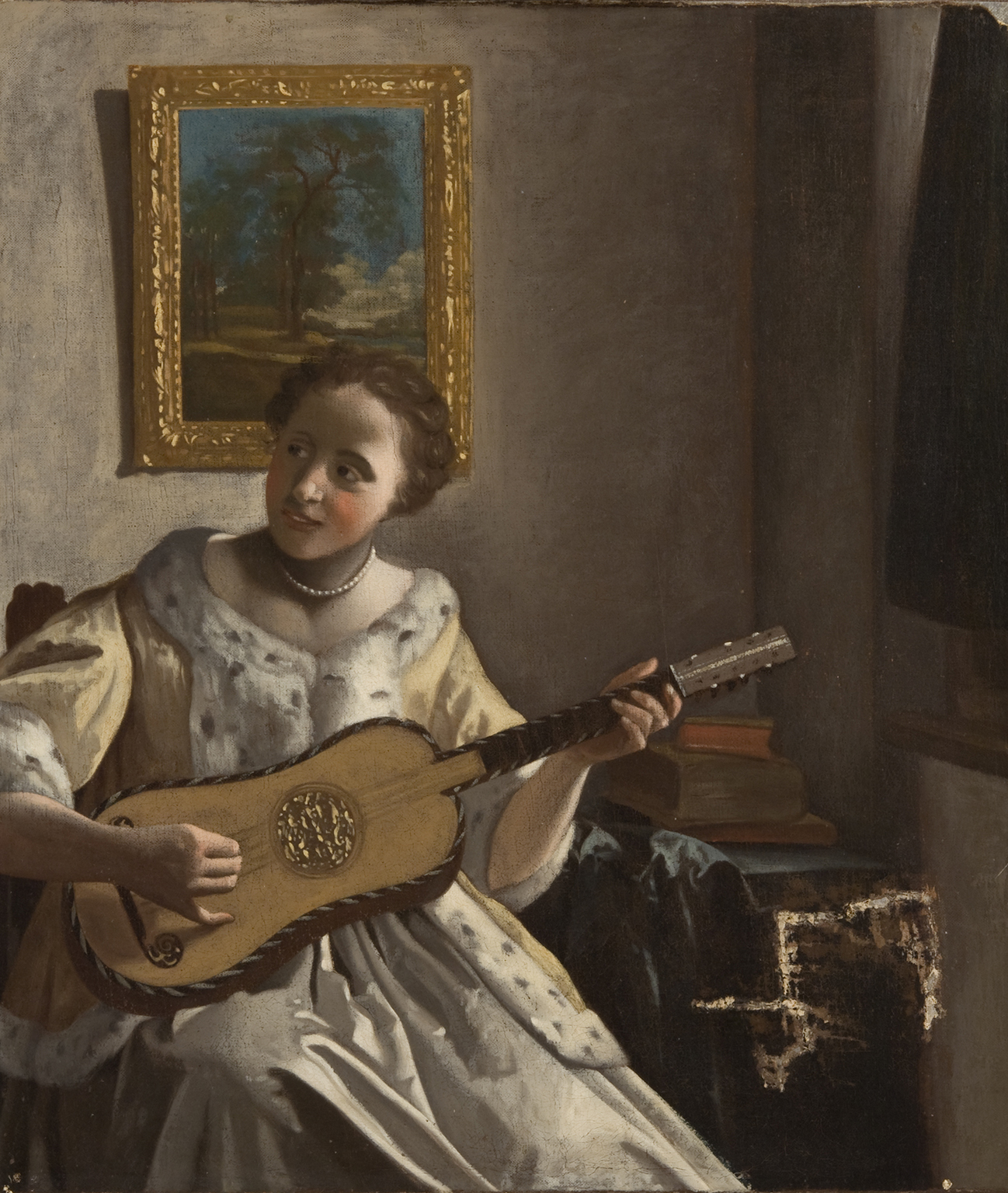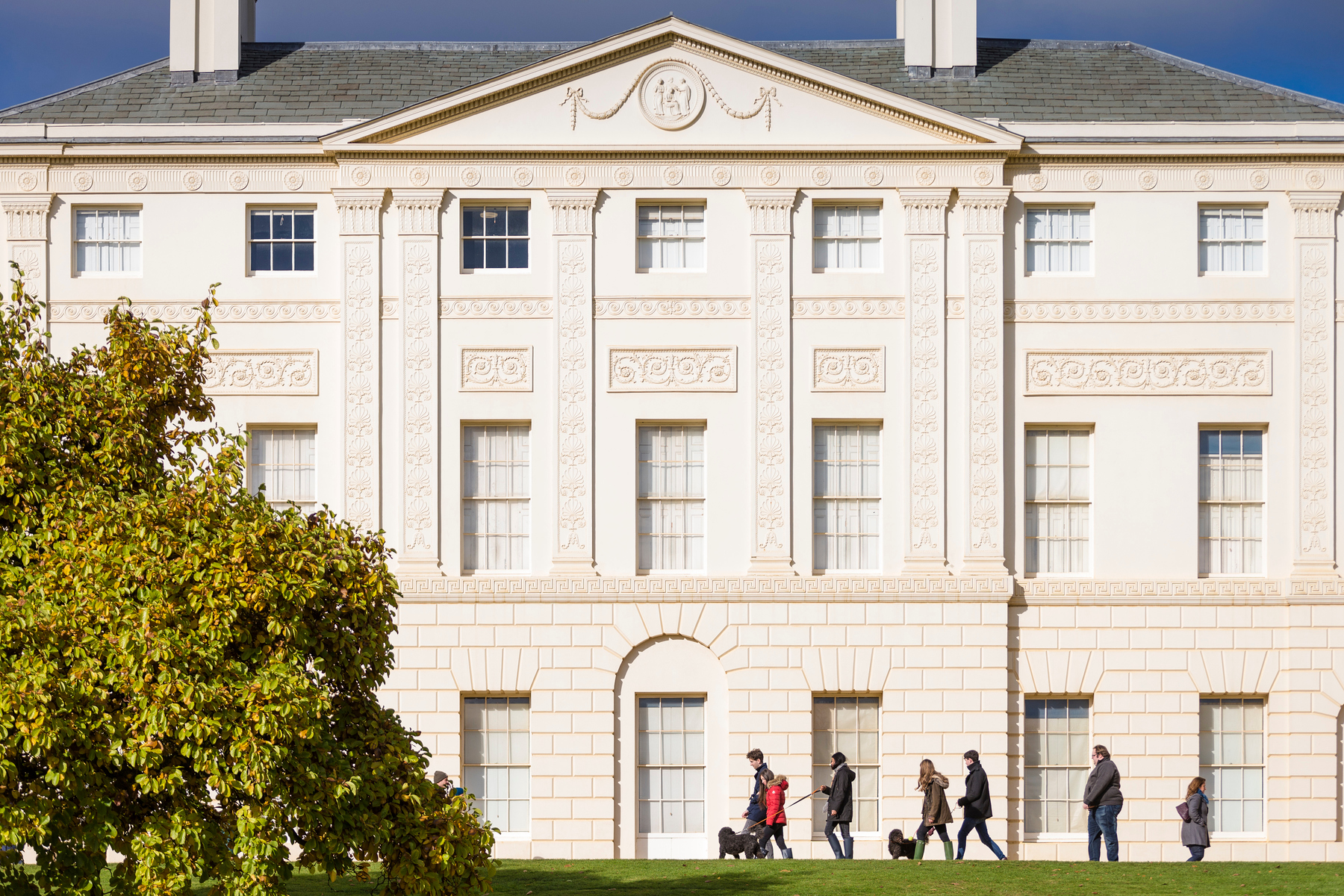A painting owned by Edward Guinness is on display next to a near identical version at Kenwood House — but which one is the real Vermeer?
A mini exhibition at Kenwood House allows viewers to ‘to practise their own connoisseurship’.


In trying to put his finger on just what made Jan Vermeer (1632–75) special, Théophile Thoré-Bürger, the French art historian who rediscovered the painter in the 19th century, alighted on the nickname ‘the Sphinx of Delft’. The tag, and its inflections, stuck. Now, it is rare to read a book or article about Vermeer that doesn’t refer to him as ‘mysterious’ or an ‘enigma’.
He deserves the terms both because there is very little documentary evidence with which to recreate his life and because his pictures are so rich with possibilities. Predominantly a painter of young women in closed rooms, the narratives are never clear, their thoughts are endlessly interpretable — are these women daydreaming of love, musing on mortality, pondering earthly possessions, yearning for a different life or future, or wondering what is going on outside their windows?
‘Double Vision: Vermeer at Kenwood’, on view until January 11, 2026, at Kenwood House, on London’s Hampstead Heath, adds a new mystery to the mix. It shows two versions of one painting side by side: The Woman Playing the Guitar. They are nearly identical. The first is a late work, painted by Vermeer around 1670–72, and purchased by Kenwood’s one-time owner, Edward Guinness, the 1st Earl of Iveagh, in 1889. At his death in 1927, it formed part of the Iveagh Bequest, his gift of Old Master and British paintings. The second work is on loan from the Philadelphia Museum of Art (PMA). It was first heard of in the Kremer Collection in Brussels in the 19th century and was later bought by the Pennsylvania lawyer John Johnson, and entered the museum collection on his death in 1917.

Edward Guinness, the 1st Earl of Iveagh's Vermeer, above, and the Philadelphia copy, below.

So are these both genuine Vermeers, or neither, or only one and, if so, which one? The question matters, not least because there are only 37 accredited Vermeer paintings known, so the addition of one more to the canon is a significant event. The differences between the two are minimal, the main ones being that the Philadelphia guitar player lacks the striking ringlets of the Kenwood young woman, and the London painting is signed and the American one isn’t. The PMA painting, however, is being displayed unrestored, complete with a repaired tear and the effects of a brutal 19th-century attempt at cleaning clearly visible. Its first stop when the exhibition closes will be to the conservation studio.

The Kenwood 'Guitar Player' was stolen in February 1974 and discovered several months later propped up against a gravestone in St Bartholomew-the-Great Churchyard, in the City. In this photograph, John Jacob, the then curator of Kenwood House, is seen picking up the painting from Scotland yard.
The truth about these twin pictures has been exercising experts for a century. Initially, the Philadelphia painting was thought to be the original work, but it was relegated to the museum stores when consensus shifted to the better-preserved Kenwood picture. Both pictures have undergone recent scientific research and while the full results have yet to be presented, some interim findings have been released.
The first difference is that the ground of the Kenwood picture — the first layer that readies the canvas for painting — is a pale grey-brown colour, consistent with the ready-prepared canvases Vermeer is known to have bought and used. This same ground, made from a mixture of lead white and chalk, toned with earths and black pigments, can be found in his other late paintings. By contrast, the PMA guitar-player is painted on a dark brown ground, primarily comprising burnt umber.

In 1925, Lord Iveagh purchased Kenwood and the surrounding estate from the 6th Earl of Mansfield. He personally selected 63 of the finest pictures from his collection and had ambitions to arrange them within the house himself. Sadly, he died in 1927 without having achieved his ambition, but bequeathed Kenwood, the grounds and his selected paintings to the nation for the public to enjoy.
Importantly, the blues in the Kenwood painting are ultramarine, an extremely expensive pigment made from ground lapis lazuli imported from Afghanistan, while those in the PDA version are made from indigo, a much cheaper vegetable dye. Meanwhile, the greens in the London picture, predominantly in the painting on the wall behind the woman (but also in the flesh tones) are painted in green earth, a mineral pigment, while those in the PDA picture are made from mixing indigo with yellow ochre.
Exquisite houses, the beauty of Nature, and how to get the most from your life, straight to your inbox.
Furthermore, there are subtle differences in the posture of the two women and their placement within the room, suggesting that the second painting was not made from a tracing of the original. Meanwhile scholars have noted that ringlets such as those worn by the Kenwood guitar-player began to disappear in Dutch paintings around 1700.
While all of this suggests that the Kenwood Vermeer is the original and the Philadelphia painting a good early copy made with inferior materials, neither institution is going so far. The exhibition displays them without a conclusion, presenting the relevant scientific material, and allowing visitors to practise their own connoisseurship. It makes for an intriguing tease. There is no questioning of Vermeer’s authorship of Edward Guinness’s picture, but did he paint the PDA one too? And if not, who did? The artist was too accomplished to be an unknown. Was it the work of a celebrated, but less famous hand? Another mystery.
'Double Vision: Vermeer at Kenwood' is on at Kenwood House until January 11, 2026. Entry is free.
Michael Prodger is a senior research fellow at the University of Buckingham and art critic for the New Statesman.
